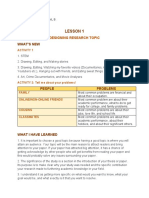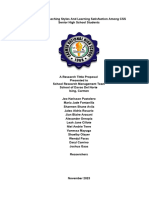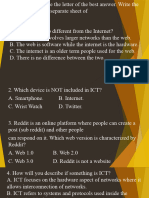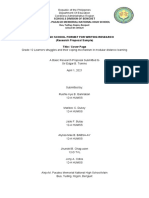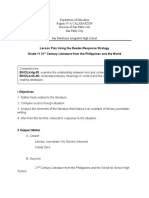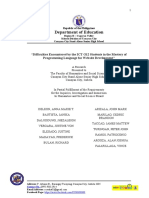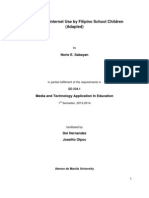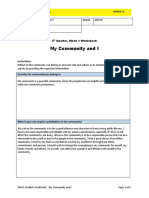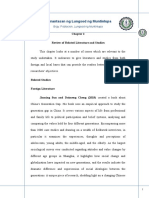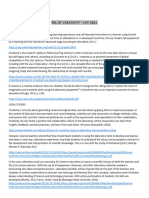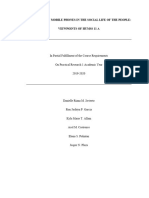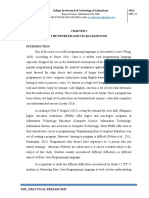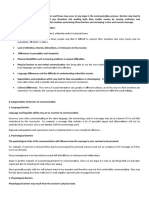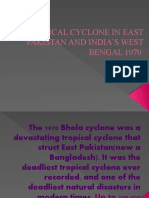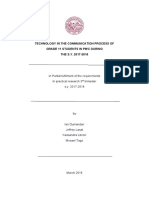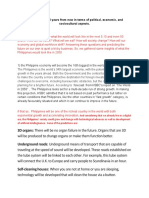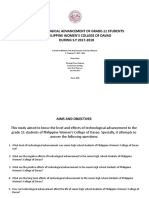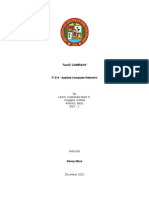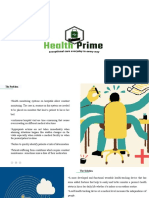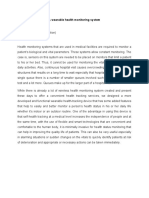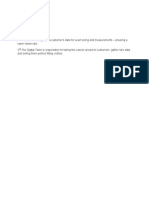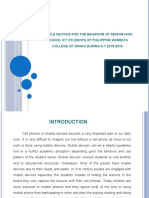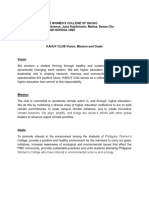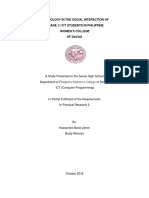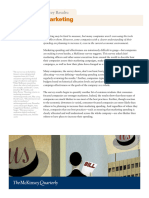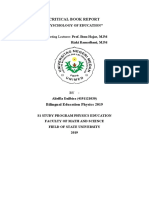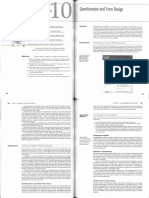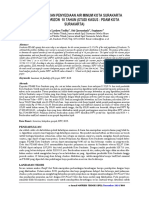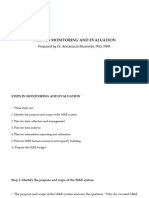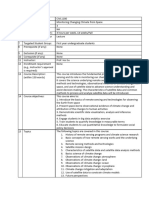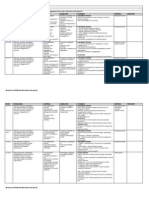0% found this document useful (0 votes)
547 views20 pagesHow Media Affect The Grade 11 Students of Philippine Women'S College of Davao SY 20-2018
The document discusses how new media and social networking sites affect grade 11 students at Philippine Women's College of Davao. It notes that students spend a significant amount of time on sites like Facebook and that this can have both positive and negative impacts. While social networking allows students to connect with others and express themselves, it can also lead students to neglect their studies and develop unhealthy comparisons to their peers. The document advocates for regulations on social media use and encouraging students to spend time online in constructive ways.
Uploaded by
kassCopyright
© © All Rights Reserved
We take content rights seriously. If you suspect this is your content, claim it here.
Available Formats
Download as DOCX, PDF, TXT or read online on Scribd
0% found this document useful (0 votes)
547 views20 pagesHow Media Affect The Grade 11 Students of Philippine Women'S College of Davao SY 20-2018
The document discusses how new media and social networking sites affect grade 11 students at Philippine Women's College of Davao. It notes that students spend a significant amount of time on sites like Facebook and that this can have both positive and negative impacts. While social networking allows students to connect with others and express themselves, it can also lead students to neglect their studies and develop unhealthy comparisons to their peers. The document advocates for regulations on social media use and encouraging students to spend time online in constructive ways.
Uploaded by
kassCopyright
© © All Rights Reserved
We take content rights seriously. If you suspect this is your content, claim it here.
Available Formats
Download as DOCX, PDF, TXT or read online on Scribd
/ 20










